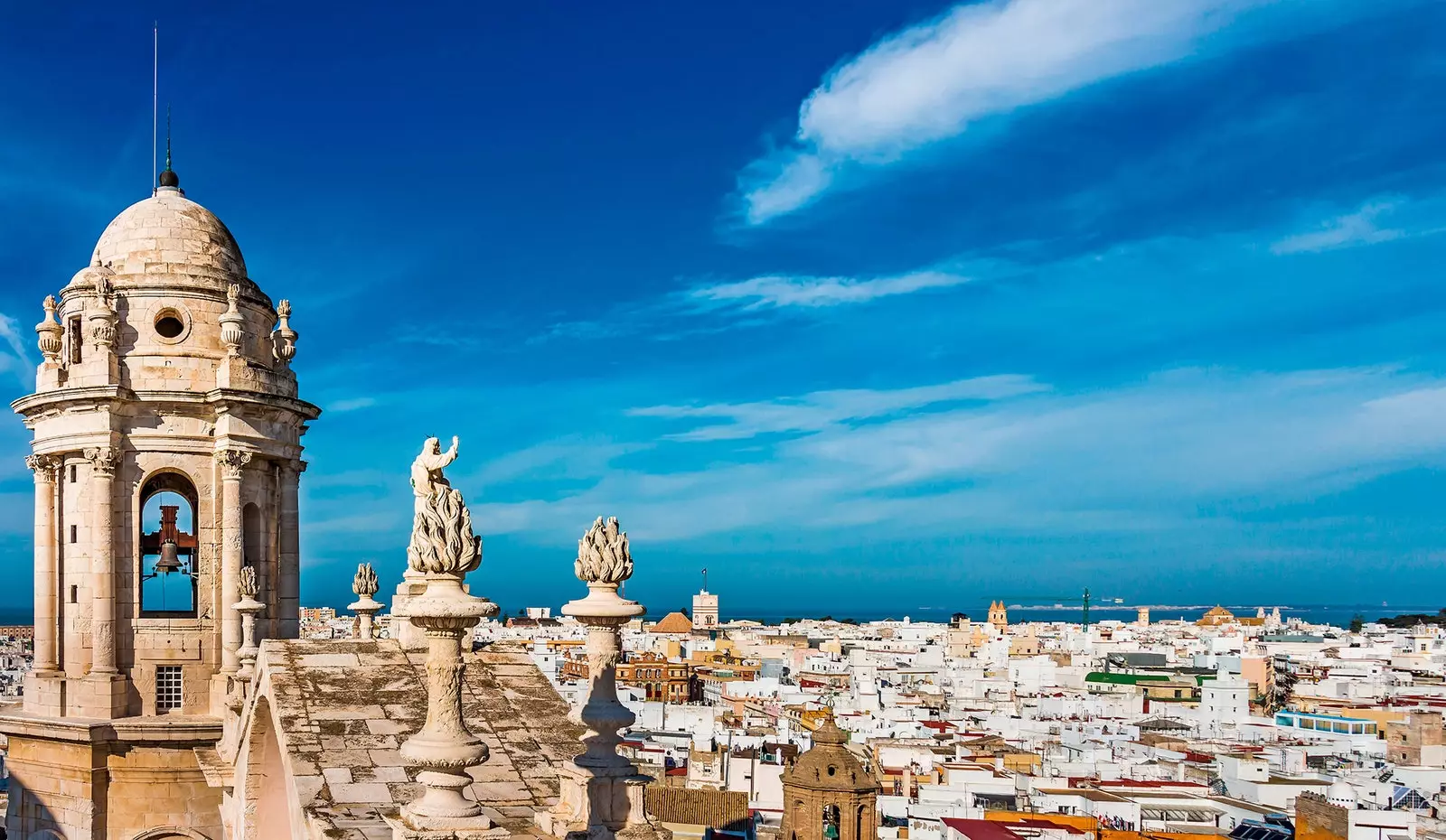
With an eye on the sky: the route of the viewpoint towers of Cádiz
Let's buckle up, our journey is about to begin. And beware, because it looks interesting: we are going to start an adventure that will take us back in time to fully immerse ourselves in the Cadiz of the Golden Age. Yes, yes, as you read it.
And in this fascinating journey to the past they accompany us the unmistakable light of the Cadiz coast and the east wind, faithful guides on our route. The objective? Tour the rooftops of Cádiz, adorned with its unmistakable lookout towers, hallmarks of the city, to discover the role played by the southern city as the official port of entry for trade with America.
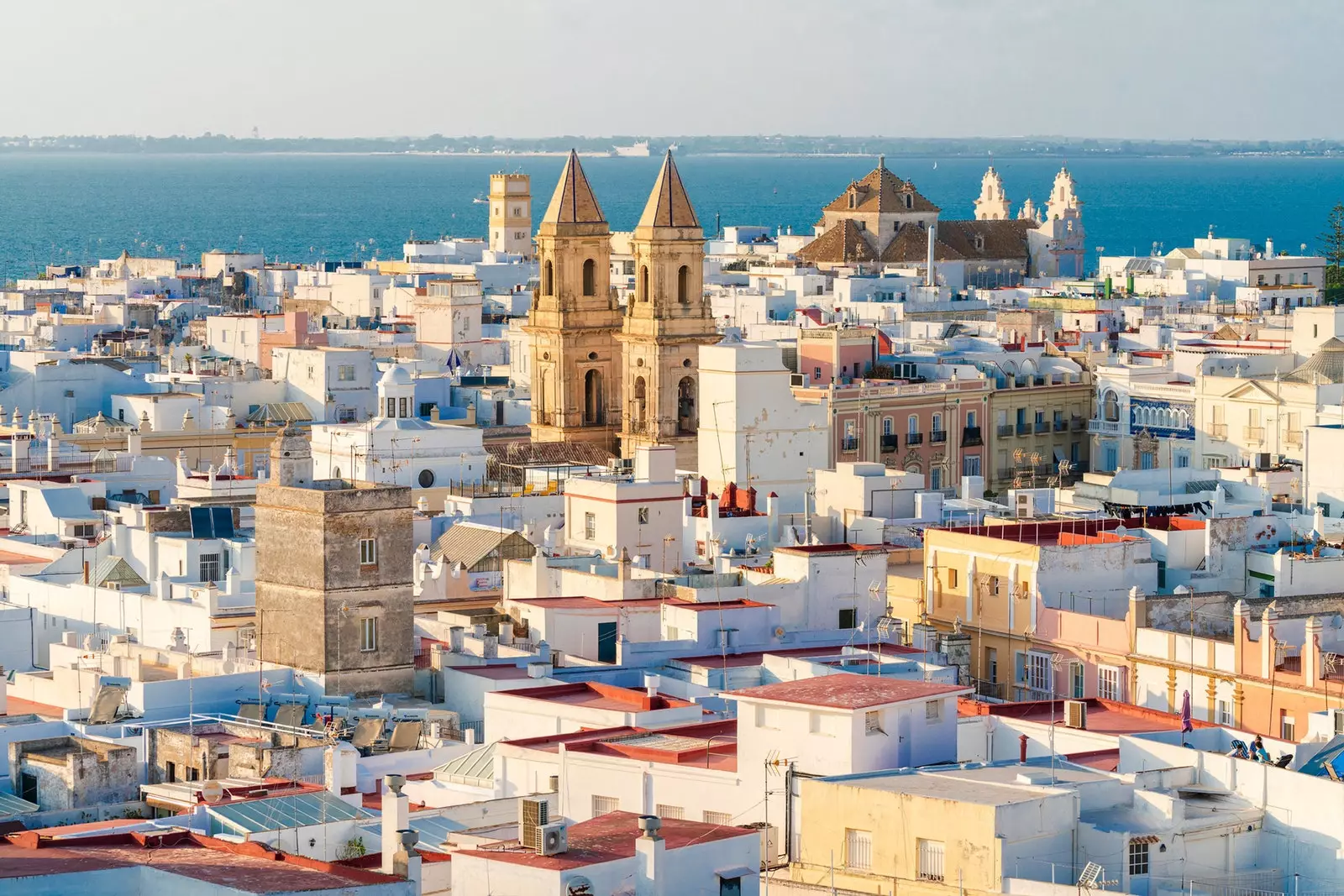
Of the 160 lookout towers that were built, only 133 remain standing.
It all began in 1717 with the transfer of the Casa de la Contratación from Seville to Cádiz. This institution, created in 1503 by the Crown of Castile to promote navigation between Spain and its overseas territories, meant that Cádiz took over the West Indies maritime monopoly.
Great era of glory in which the ships made constant trips between the two continents filling their warehouses with all kinds of merchandise and making great fortunes. Cádiz obviously reached its peak. So much so that it became one of the most important ports in the Spanish Empire.
The great merchants of the time then decided to build, inside their own palace-houses, tall towers that rose from their roofs. These were intended for two functions: on the one hand, control the entry and exit of their ships in the port of Cadiz. For another, serve the crew to identify the house of merchants from afar. They say that up to 160 lookout towers were built throughout the 18th century. Today, just 133 remain.
To get an idea of the profile of Cádiz, and in the process soak up a bit of its most authentic essence, we cross the historic earth gate, which once formed part of the old wall, and we enter the ancient Cádiz.
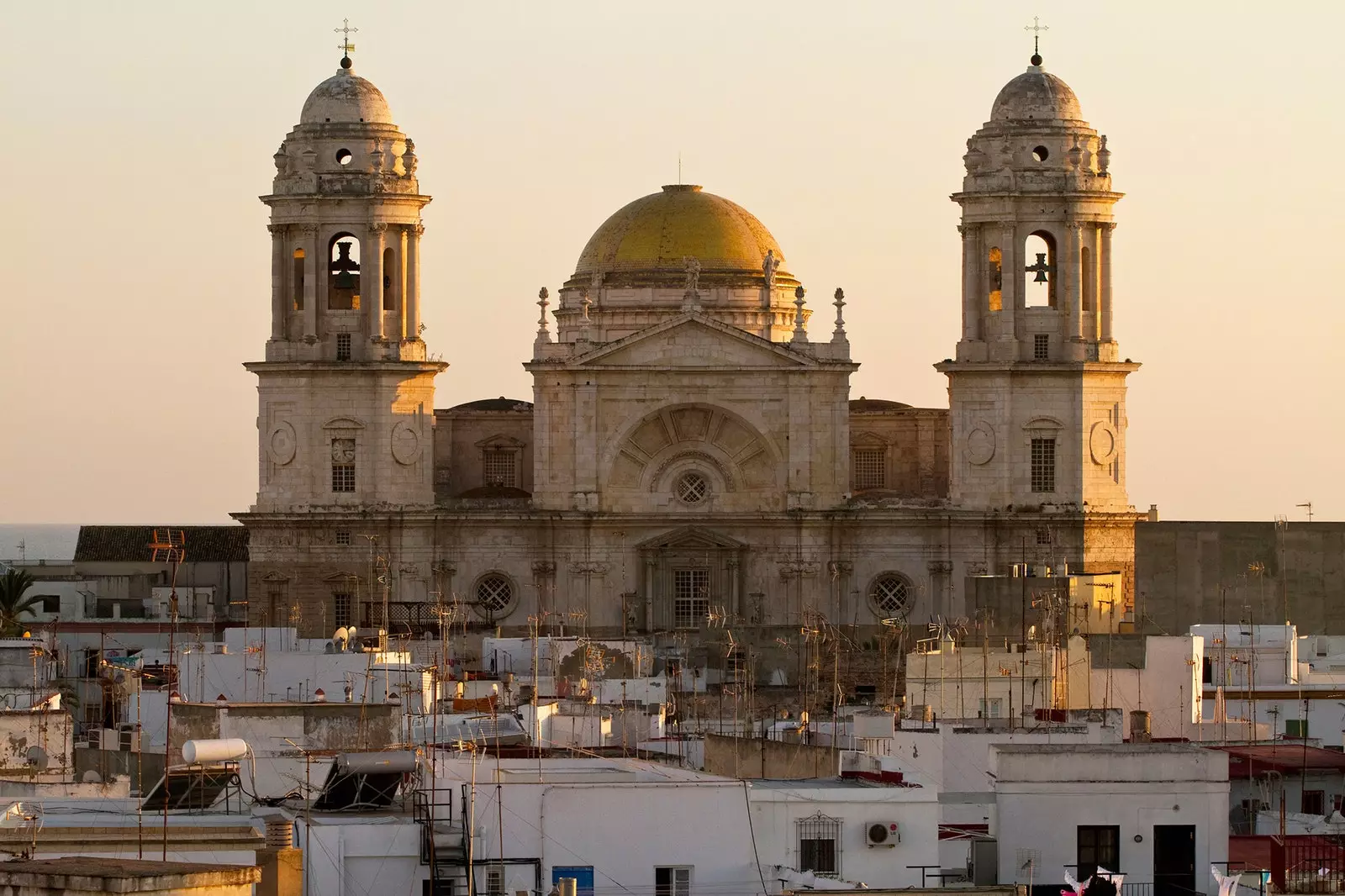
Cadiz Cathedral
Just five minutes away, our first destination: elevation in the Cathedral Square, epicenter of popular life in Cadiz, is the imposing cathedral of Cadiz. This emblem of the city, which was built in the 18th century in support of the incipient wealth from overseas, combines Baroque and Neoclassical styles on its façade and It was built largely with oyster stone —hence its great decline in some points, where you can see how the salinity of the environment has been affecting over the decades—.
We went up and up its steps until we reached the clock tower, at the top. When we catch our breath, we enjoy the reward: before us what is, quite possibly, the most complete panoramic view of the city and the eternal Atlantic. We take a deep breath of that sea breeze, which is strongly noticeable up here, and we capture it on our retina the silhouette of the beautiful Cádiz with its lookout towers. Now yes: it's time to know the first of them.
FROM TOWER TO TOWER THROUGH THE HISTORY OF CADIZ
Their 45 meters high, which makes it the tallest of all the lookout towers in Cadiz, and its privileged location, in the center of the historic center, made this beautiful monument It was declared an official watchtower in 1778. It's about the Tavira Tower, and his name, which commemorates the first of the lookouts he counted on — Commander Antonio Tavira —, appears on the list of musts to visit for every traveler who lands in Cádiz.
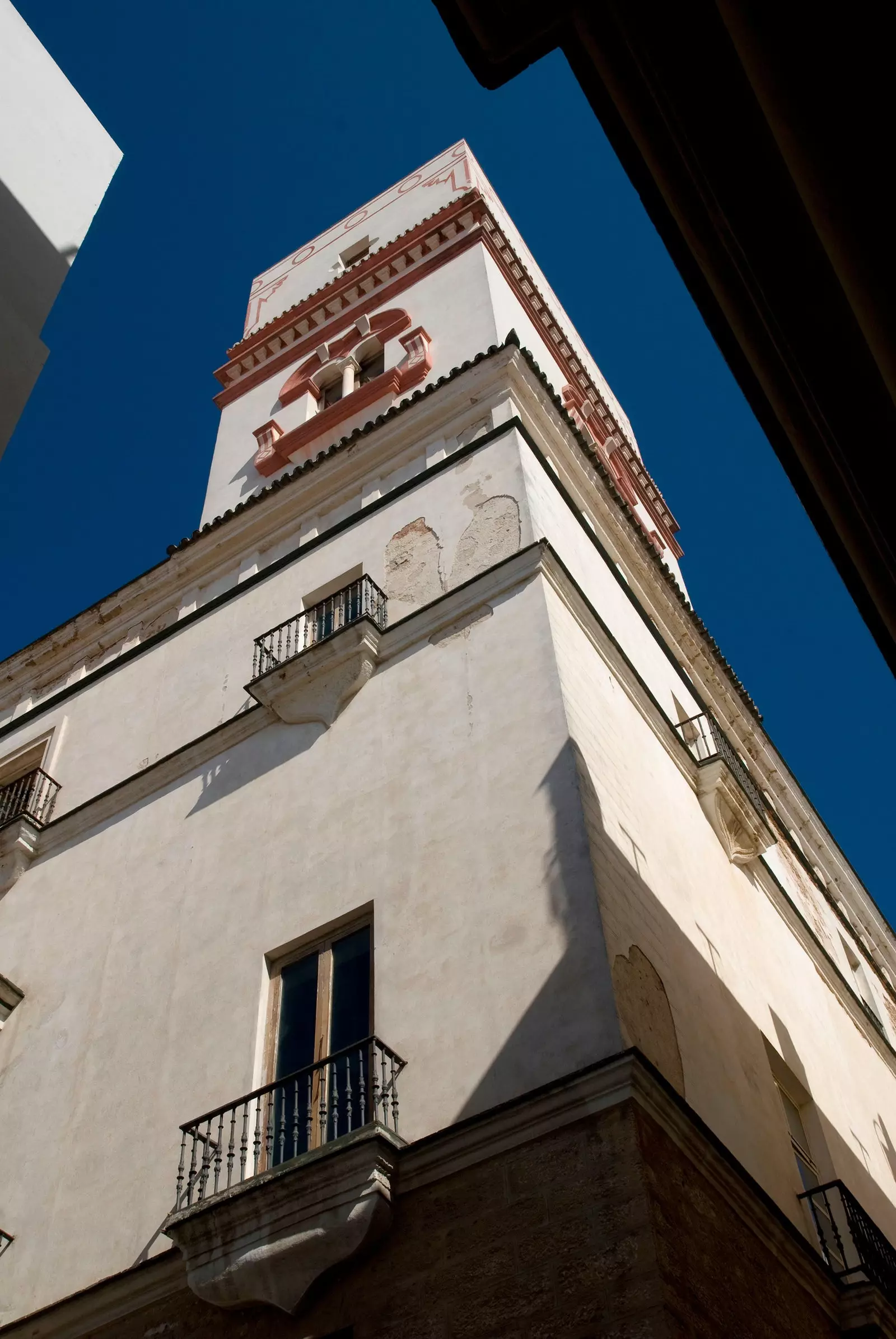
The top floor of the Tavira Tower houses a dark room from which to contemplate the sky is priceless
We go up —it is what this route has, that we will have to go up and up— its steep stairs willing to immerse ourselves in its history and, between exhibition halls, photographs and old prints, we discover that we are in the palace of the Marquises of Recaño that, like all merchant houses, had a structure with three floors and an upper terrace: the ground floor served as a warehouse and office, the first was the noblest part where the family lived, the second corresponded to the servants and the roof terrace was the playground for all the people living together.
Further up, the lookout tower, which came to develop up to four different styles in Cádiz: the terrace tower, the armchair tower, the sentry box tower and the mixed tower. The one in the Tavira Tower? The first one, yes sir.
Before reaching it, we dedicate the well-deserved little while to the camera obscura that awaits us on the top floor: contemplating the sky of Cádiz in this way is priceless. Finally in the tower, the emotion arrives: the views of the cathedral of Cadiz from here are unique and, although it is difficult for us to look away from it, what really conquers us is the hidden beauty, just a few meters away. Is lookout tower, invisible at street level because it is located on a narrow road, deceived by its beauty and for being, curiously, the only one of octagonal shape.
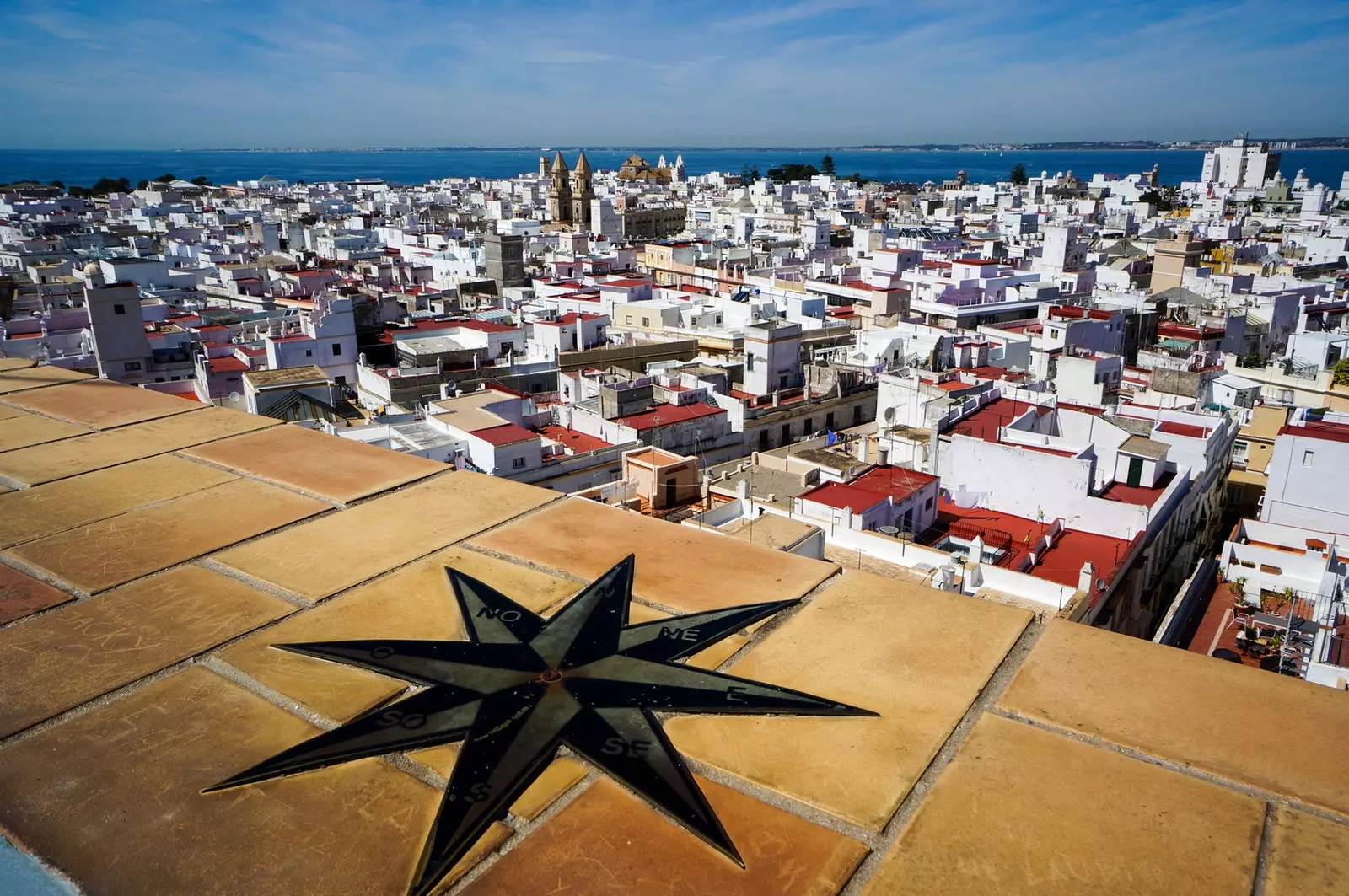
Cadiz from the tower of Tavira
But we have already said it: there are approximately 133 lookout towers still standing in Cádiz. Many of them have been repurposed as homes. —Yes, there are some lucky ones who enjoy a bedroom in an old lookout tower, life is like that—. Others, however, have been used for other purposes.
It is the case of the House of the Chains, today the seat of the Provincial Historical Archive. Between offices and offices, we enter this historical monument to discover some of its peculiarities.
The building belonged to the merchant Don Diego deBarros, who amassed a fortune at the time, and In its lookout tower you can still see the original pilasters: from up there we once again enjoy the light, the smell of the sea and that other Cadiz that unfolds in the heights. The one with white sheets hanging in the wind, the one with groups of friends chatting in the sun on their rooftops or the one with children who take the opportunity to laugh between games in the highest part of the building. That, too, is Cadiz.
However, one of the greatest curiosities of the house is precisely below: the imposing baroque portal that welcomes the building is a true marvel.
We do not have to go very far to come across another face of what the lookout towers mean for Cádiz. And it is that this unique legacy has served as inspiration to poets, musicians and painters along the centuries.
Cecilio Chavez, that has the study of him in the Christopher Columbus street, knows very well what we mean: we enter his particular temple to art, full of easels, brushes, rags and colors, to discover his painting, a collection of paintings of all sizes and shapes inspired, of course, by this hallmark of Cadiz: which understands it as part of the life of its own inhabitants.
SLEEP IN A VIEW TOWER? IF POSSIBLE
Although some of the mythical lookout towers remain in an advanced state of deterioration, many others have been renovated and adapted for other purposes. For example? The House of the Four Towers, a Cadiz neoclassical style building built between 1736 and 1745 in which sobriety, symmetry and decorative elements are its main characteristics. And here is a curiosity: in the middle of the 18th century, urban planning regulations prohibited building more than one lookout tower per house, so the owner of the building was inventive: he divided the block into four and built four different houses, each with its own sentry box lookout tower. Today it is listed as an Asset of Cultural Interest.
Originally, many of the rooms in these houses were rented seasonally to travelers waiting for their ship to depart from the port. A use that was recovered precisely in 2015: it was then that one of the buildings opened the beautiful boutique hotel Casa de las Cuatro Torres, whose lookout tower has been transformed into a beautiful terrace where to stop for a drink with —yes, again— unbeatable views.
Inside, yes, we can only marvel: each room has received the name of an illustrious sailor of the eighteenth century and in all of them a wall has been preserved in its original style, oyster stone. The cafeteria bar, reception, skylights and toilet doors have been made with 18th century woods that were already in the house. An absolute work of art.
And we do not need to move much, just a few meters, to discover another stately building next to the Plaza de España: the House of the Five Towers, today used mostly as homes, they are the best example of historic elegance adapted to the 21st century. we were captivated by its white facades and decorative details while we continue the walk to the Hotel Las Cortes de Cádiz: another hotel in a house-palace of an old Charger of the Indies? Exact.
And the best thing is that staying in it doesn't just mean staying in a hotel with history. It is to enjoy elements such as the railings of the stairs, the mahogany doors or the entrance gate, which They remain intact after more than 200 years.
the palace did the Marquis of Canada, a Sevillian who was a shipping agent, and over the centuries has housed personalities of the stature of Hans Christian Anderson or —it is said, it is commented— Alexander Dumas. What are we left with? With its chill out terrace, of course, from which, under the shelter of its lookout tower, have a tasty cocktail and watch the best sunsets over the city.
A DIFFERENT PERSPECTIVE
And yes, the time has come to say goodbye to this city that makes us fall in love so much, but for this we are going on an excursion. From Puerto Sherry, in the neighboring Puerto de Santa María, we set sail hand in hand with David and Adita, from 360Sail, to discover the Cádiz of the lookout towers from a very different enclave: the sea.
Thus, rocked by the waves of the Atlantic and propelled by the Levante wind from Cadiz, we put an end to our traveling journey paying honors to the sailors of the 18th century: sailing. An experience that allows us to enjoy views very similar to those found, upon arrival in the city, by those ships that carried merchandise from the Indies.
Protagonists of the sky of Cádiz, its lookout towers are the history and essence of a city that has always lived facing the sea. They are the legacy of a Golden Age that forever marked its image, giving it one of the most unique and beautiful urban profiles in the world. And we attest to it.
